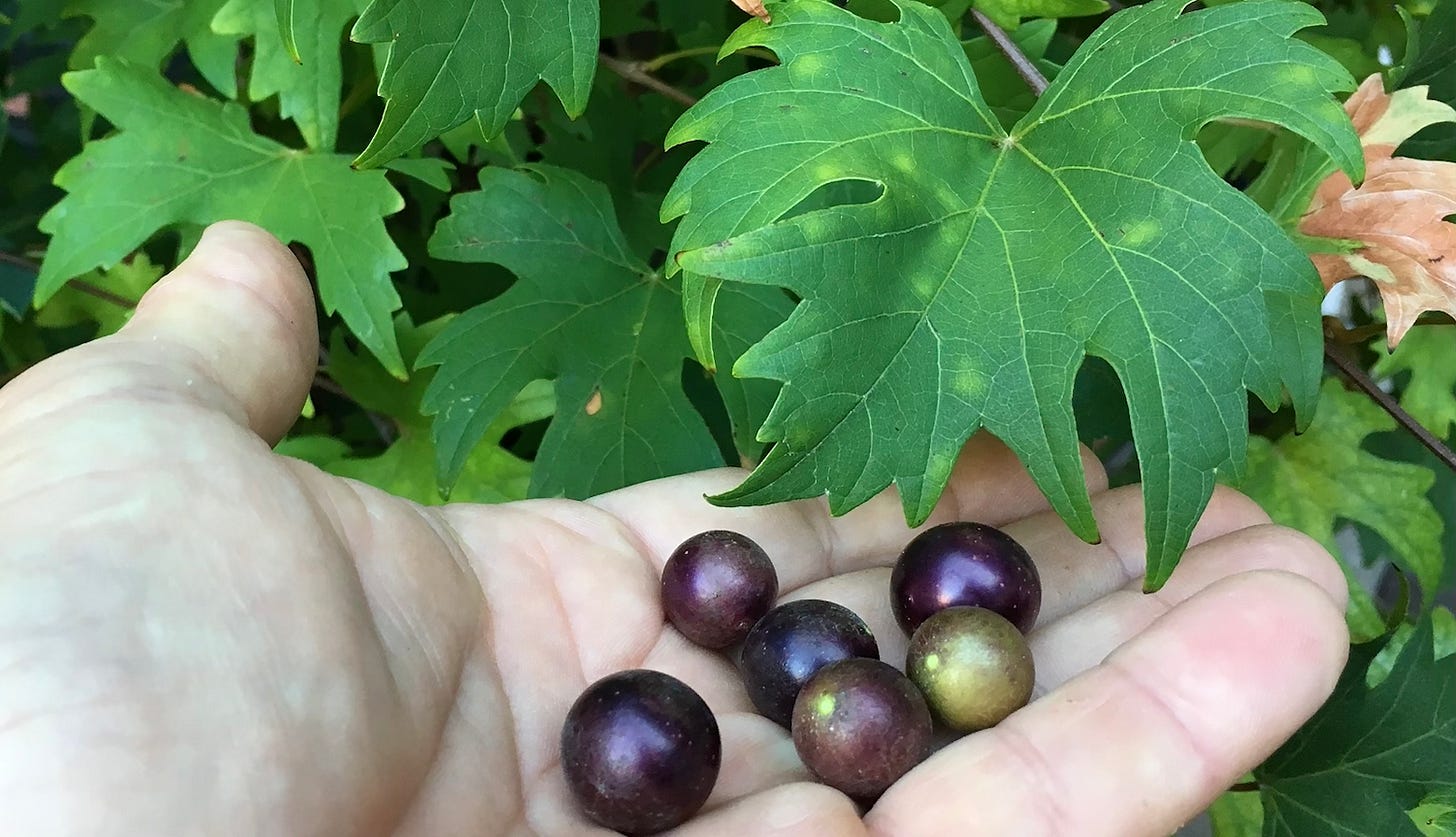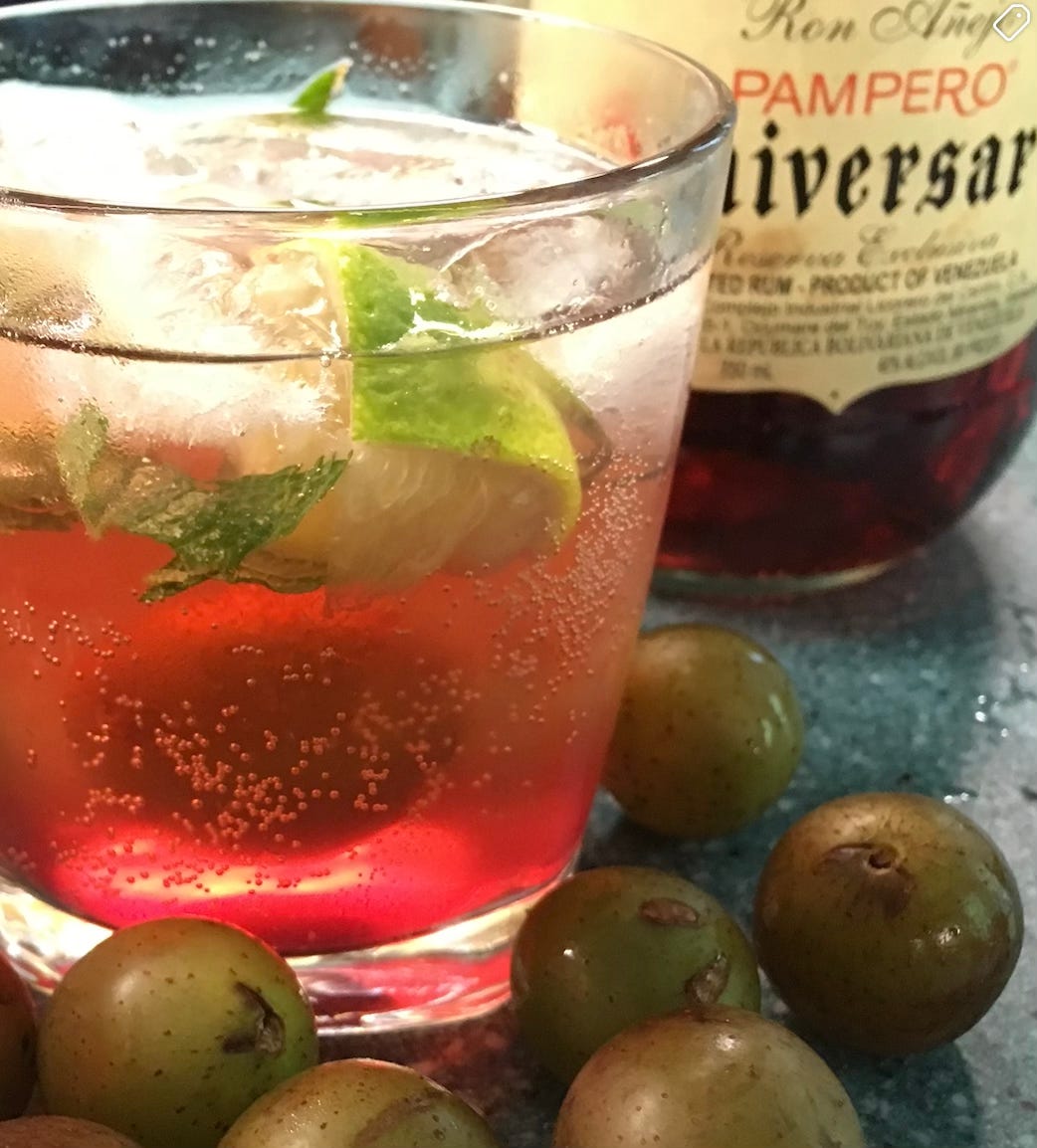Last week, on an August evening, it was 88, warmish but not humid. It's August arid. "Gosh, that little breeze is so nice," Mama says with relief. She says this often these days. Even the dogs seem more spry. The horizontal, orange sun lights up every tiny thing in the air. Dust floats. Gnats flutter. Dragonflies - wow! What is they do? Swarms of dragonflies, warzone helicopter crowds of big blue dragonflies careening, sure to hit each other, crowds of them, but when I walk up to them, they somehow, for some reason, move in mass down the fence line.
That fence line is a curtain of purple muscadines and green scuppernongs. The scene needs further description so you’ll understand what a lovely moment it was. I’ll delve into that and the lovely collection of people of all ages, races, and worldviews working together, chatting in harmony (in Sunday’s essay).
This muscadine-picking party, including church ladies, children, my husband Tom, and at least one young socialist, are all working in harmony. We need more of that and less social media division. But even here, under dragonfly squadrons, there’s comes up an argument. Someone says, “The green-bronze scupernongs are the best.”
“Oh no. The purple muscadines are,” comes the retort. I'm going to make these in jelly first. Then I’ll make muscadine jelly and then put it into jelly rolls,” says one of the older ladies.
Tonight, we’ll test those rolls. If they are delicious, we’ll serve them during our October Farm-to-Table lunch. But I can tell you, there’s no need for argument; the old lady is wrong; the green-bronze ones, the ones called scuppernongs, are the best. Plus, they are one of the first cultivars of our native grape, possibly one of the first cultivars of American food crops.
One more thing: they make a lovely juice to mix with a little rum. I’m telling you green is best.
Find a place for muscadines if you want to grow the most food-producing, easy-care, no-spray plant for a deep south garden. They make a handsome, though big vine. You can train them up a wall, up trees, through a hedge, on a chainlink fence, on fire escape or even in a big pot on a nice tuteur. But they can get massive, so in any case, you’ll need to learn to prune.
My go-to variety for urban growing is a self-fertile variety called ‘Nesbit.’ I like its handsome, rounded, scalloped leaves that turn spectacular gold in the fall. If you only have room for one, make sure you get a self-fertile variety. (My other favorites for out-of-hand eating, juice, and cooking will be in Sunday’s post.)

Keep your eyes out for Sunday’s essay - there’ you’ll find a bit more story of this mesmerizing evening, the kind of moment I moved back to the farm to get to be a part of, as well as a few more of my favorite muscadine varieties, recipes and sources.






Love to you all up at Funky Little Flower Farm.
My brothers scuppernongs were outstanding this year.